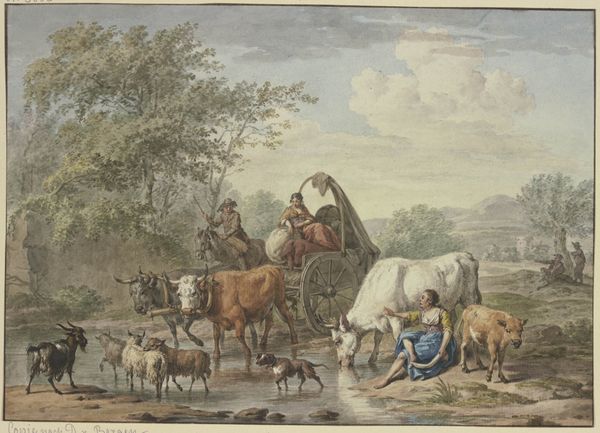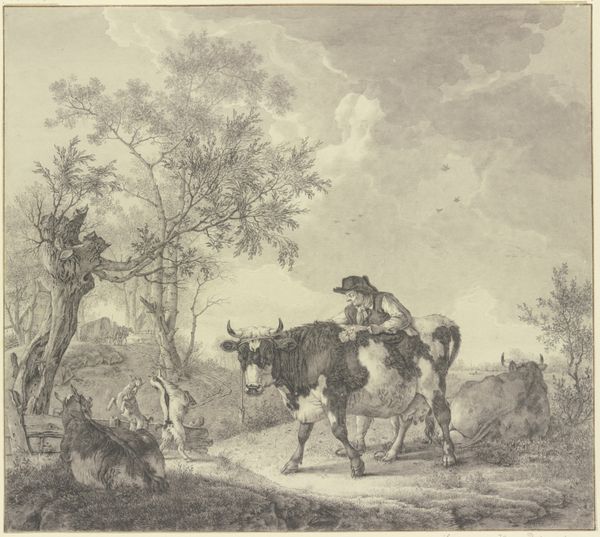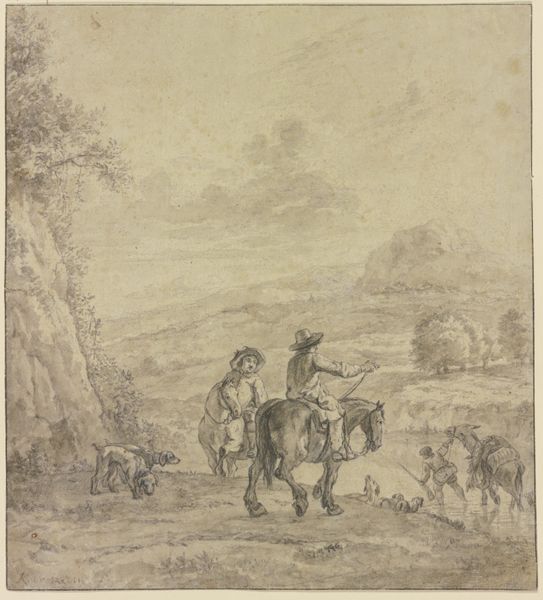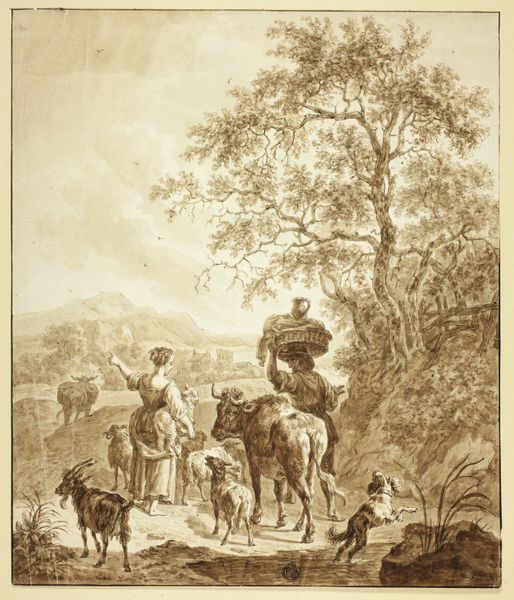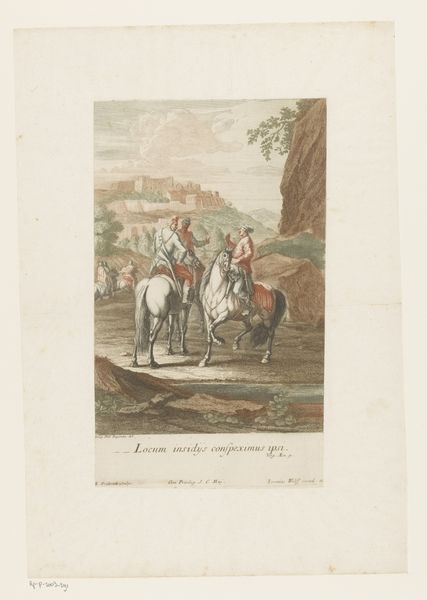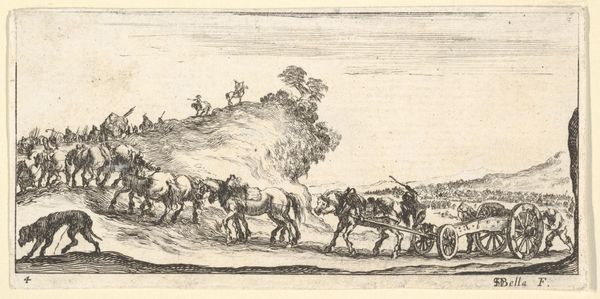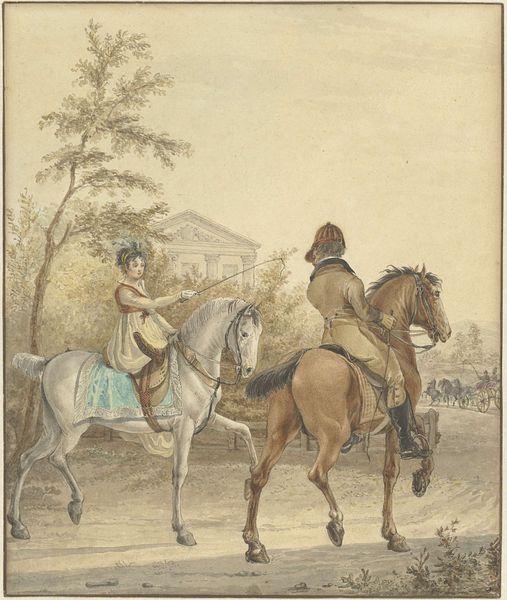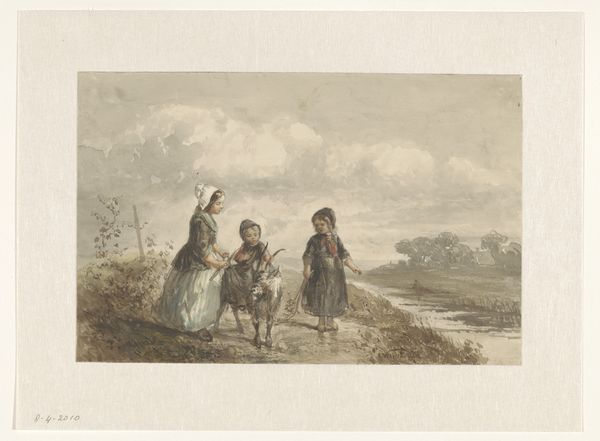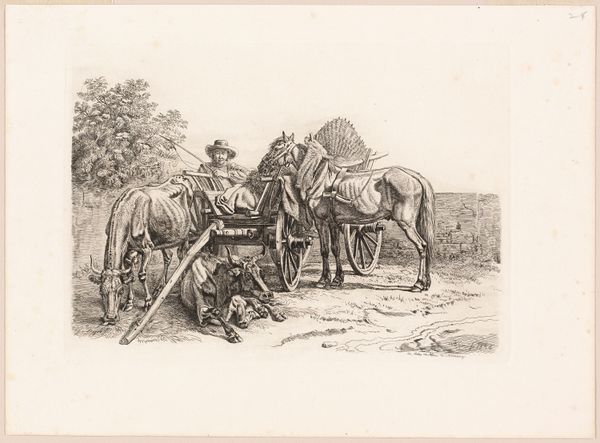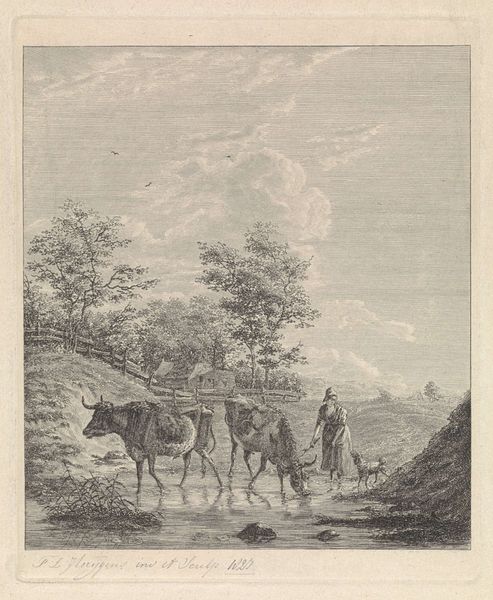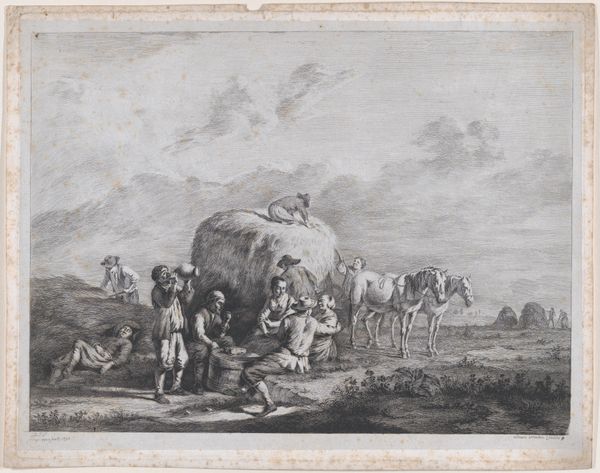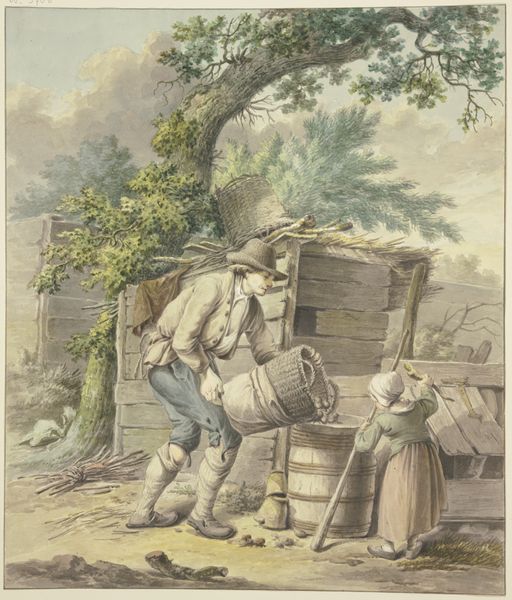
drawing, coloured-pencil, painting, watercolor, ink
#
drawing
#
coloured-pencil
#
painting
#
landscape
#
watercolor
#
ink
#
coloured pencil
#
romanticism
#
genre-painting
Copyright: Public Domain
Editor: So here we have "Bauernwagen in bergiger Landschaft", created around 1790 by Wilhelm von Kobell. It appears to be done with watercolor, ink, and coloured pencil. The first thing that strikes me is how…mundane?…the scene is, and I’m curious how this snapshot of daily life translates into art. What catches your eye, especially considering the era? Curator: The very "ordinariness" you mention is precisely what interests me. Consider the historical context: Kobell painted this during a time of revolution and upheaval. While royalty and grand historical events dominated artistic narratives, here is an image focused on rural life, elevated to the level of artistic consideration. It reflects a growing interest in the common person, a trend linked to the Enlightenment ideals seeping into the cultural consciousness. Editor: So it’s almost like a political statement by depicting the lives of regular people? Curator: Perhaps not overtly political, but certainly reflective of shifting values. Art academies were becoming increasingly powerful. How did this influence the artistic recognition and valuation of scenes such as this? Editor: That's a good question. I guess that landscapes became more recognized, a proper subject, beyond only being used as background, maybe because it allowed an artist to reflect on their nation through these romanticised images? It certainly avoids directly conflicting with any political factions while being relevant to anyone anywhere. Curator: Precisely! And it's interesting to consider the role of the museum itself in shaping our view of this painting. The Städel, by exhibiting it, asserts its cultural and historical importance. A seemingly simple scene of a hay wagon becomes a window into a past world, viewed through a very particular lens shaped by social, economic, and intellectual shifts. What does that tell us? Editor: Well, that it can be difficult to isolate "art" from the context around its reception, not only from its creation. What an eye-opener! Curator: Exactly. Art isn't created in a vacuum; it is actively constructed and negotiated over time, even here, looking at a pastoral scene from the late 1700s.
Comments
No comments
Be the first to comment and join the conversation on the ultimate creative platform.
